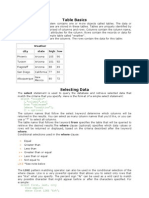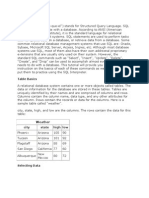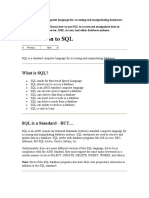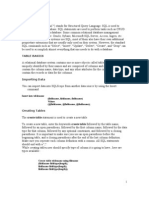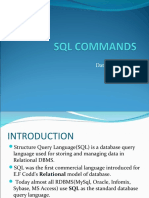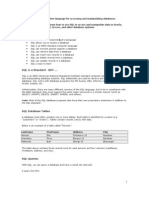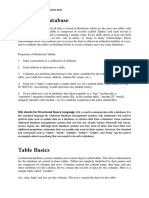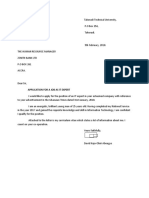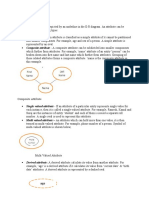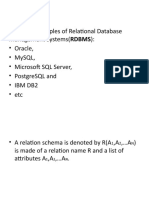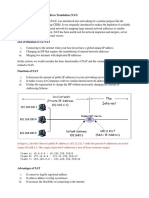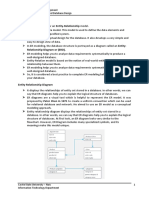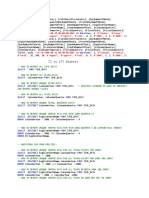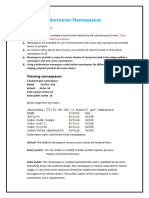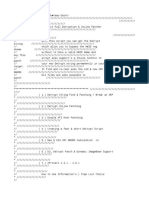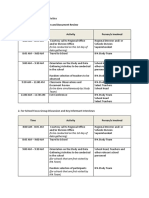0% found this document useful (0 votes)
35 views28 pagesBeginning SQL Tutorial
This document provides an introduction to the SQL programming language. It discusses SQL's use in communicating with and managing databases. The main topics covered include selecting data with queries, creating tables, inserting data, updating records, deleting records and tables. Syntax examples are provided for common SQL statements like SELECT, CREATE TABLE, INSERT, UPDATE, DELETE. Exercises are included to help learners practice these SQL statements.
Uploaded by
Firemandeheavenly InamenCopyright
© © All Rights Reserved
We take content rights seriously. If you suspect this is your content, claim it here.
Available Formats
Download as PPT, PDF, TXT or read online on Scribd
0% found this document useful (0 votes)
35 views28 pagesBeginning SQL Tutorial
This document provides an introduction to the SQL programming language. It discusses SQL's use in communicating with and managing databases. The main topics covered include selecting data with queries, creating tables, inserting data, updating records, deleting records and tables. Syntax examples are provided for common SQL statements like SELECT, CREATE TABLE, INSERT, UPDATE, DELETE. Exercises are included to help learners practice these SQL statements.
Uploaded by
Firemandeheavenly InamenCopyright
© © All Rights Reserved
We take content rights seriously. If you suspect this is your content, claim it here.
Available Formats
Download as PPT, PDF, TXT or read online on Scribd
/ 28



